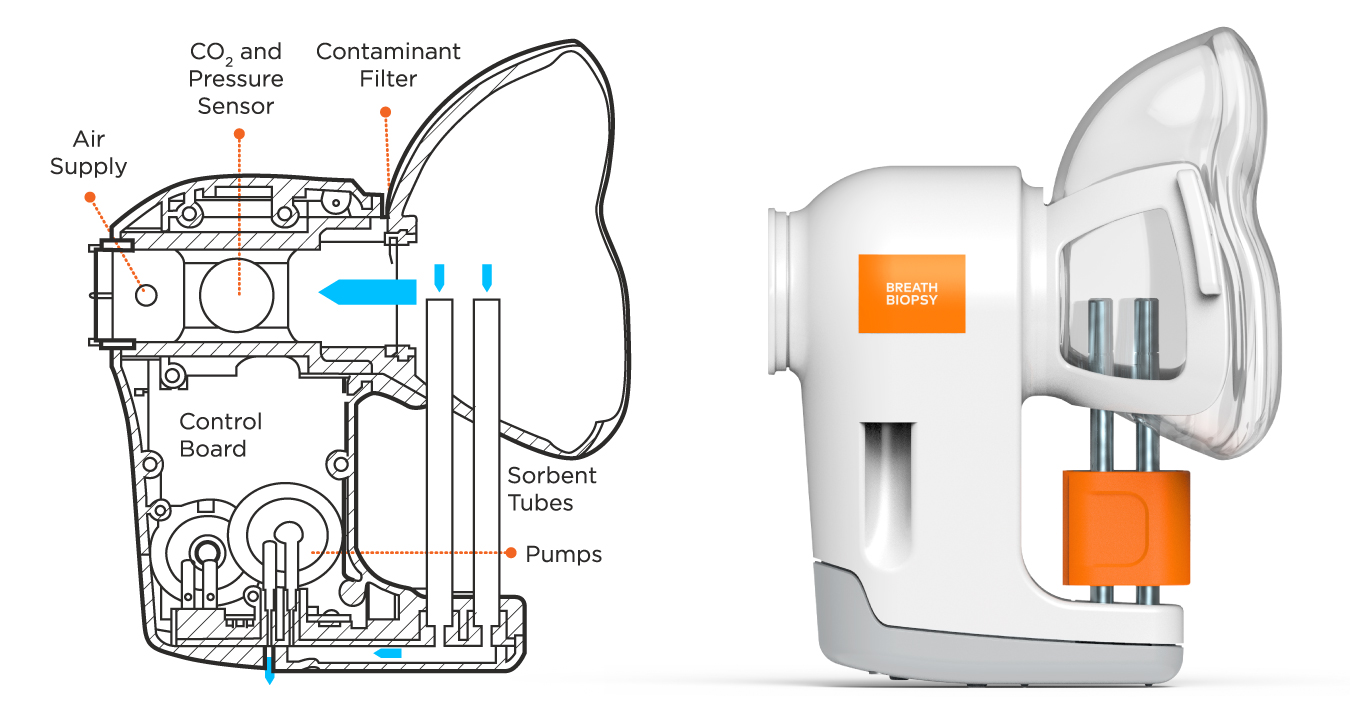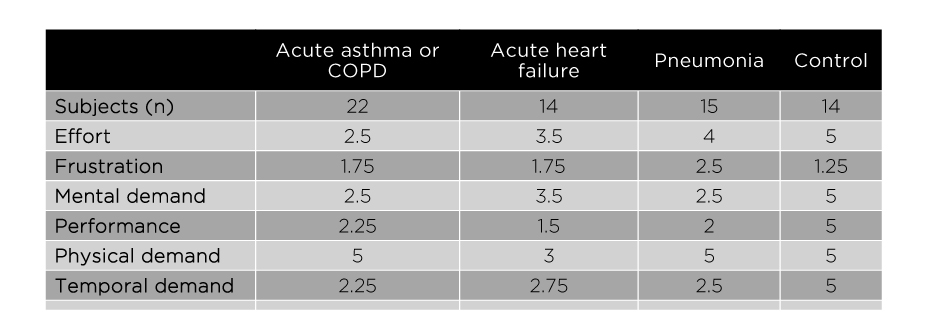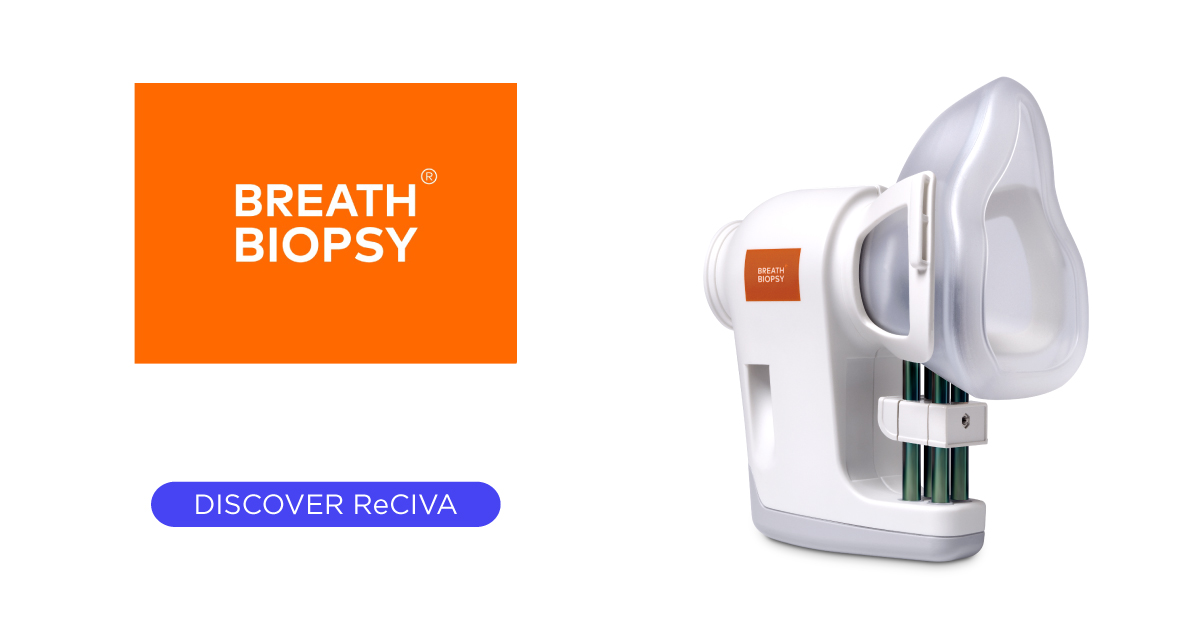An Independent Evaluation of Patient Experience Using ReCIVA
Published on: 7 Jan 2021
A recent paper from the East Midlands Breathomics Pathology Node (EMBER), published in the European Respiratory Society’s journal ERJ Open Research, examined the feasibility of using our ReCIVA® Breath Sampler, a key component of Breath Biopsy®, with patients experiencing acute breathlessness.
While non-invasive breath tests are nearly always more acceptable to vulnerable adults and children than other sampling methods, when key symptoms include acute breathlessness it’s natural to question the suitability of using breath for sample collection. This feasibility study aimed to address that uncertainty, and concludes that it is indeed both ‘possible and acceptable to collect breath samples from both adults and children at the bedside for breathomics analysis using the ReCIVA® device’.1

The study collected breath samples from 65 adults (51 with various forms of acute breathlessness, 14 controls), and 61 children, (52 with asthma, 9 controls) using ReCIVA. Aiming to collect a full 1 L of breath from each participant, 98.4% of adults and 75.4% of children were able to give a complete sample in under 15 minutes. In both children and adults there was no significant difference in the numbers that were able to provide a full sample between those with breathlessness / asthma and the controls. Amongst adults, however, heart failure and pneumonia both seemed to extend sampling time.
Following sample collection, Holden et al. used an assessment tool known as NASA-TLX with the adult cohort to evaluate patient comfort when using ReCIVA. NASA-TLX uses 6 metrics to assess perceived workload and effort. Each metric produces a value, based on patient response, from 1 – 21, with 1 representing the lowest workload and 21 the highest. Mean values for the adult population were as follows: 3.37 for effort, 2.34 for frustration, 3.8 for mental demand, 2.8 for performance, 3.9 for physical demand and 2.8 for temporal demand. This tool was not used with the pediatric cohort, who were ‘not easily able to grasp the questions and scales used’.2

The results of our study demonstrate the acceptability of using [ReCIVA] to collect breath samples and the NASA-TLX measurements of perceived task load emphasise how little effort and demand is required to collect these samples in acutely unwell patients.4
In their concluding notes Holden et al. also compared ReCIVA favorably with Tedlar bags, which they described as suffering from several potential limitations, such as the ‘decay of certain groups of compounds, which affects the time for which samples can be stored, diffusion of compounds (such as acetonitrile) through the bag wall, and contamination of the bag wall with previous substances, which affects the limit of detection’.5 As the paper notes, many of these issues are solved by ReCIVA which ‘allows samples of breath to be collected directly onto sorbent tubes with pre-concentration of VOCs’ and can then be refrigerated before analysis with minimal gain or loss of VOC concentration.
Read The Full paper Use ReCIVA in your study
References
- Holden KA, Ibrahim W, Salman D, et al. (2020) Use of the ReCIVA device in breath sampling of patients with acute breathlessness: a feasibility study, ERJ Open Res. https://doi.org/10.1183/23120541.00119-2020, p. 2
- Holden KA, Ibrahim W, Salman D, et al. (2020) Use of the ReCIVA device in breath sampling of patients with acute breathlessness: a feasibility study, ERJ Open Res. https://doi.org/10.1183/23120541.00119-2020, p. 5
- Holden KA, Ibrahim W, Salman D, et al. (2020) Use of the ReCIVA device in breath sampling of patients with acute breathlessness: a feasibility study, ERJ Open Res. https://doi.org/10.1183/23120541.00119-2020, p. 6
- Holden KA, Ibrahim W, Salman D, et al. (2020) Use of the ReCIVA device in breath sampling of patients with acute breathlessness: a feasibility study, ERJ Open Res. https://doi.org/10.1183/23120541.00119-2020 p. 7
- Holden KA, Ibrahim W, Salman D, et al. (2020) Use of the ReCIVA device in breath sampling of patients with acute breathlessness: a feasibility study, ERJ Open Res. https://doi.org/10.1183/23120541.00119-2020, p. 7
